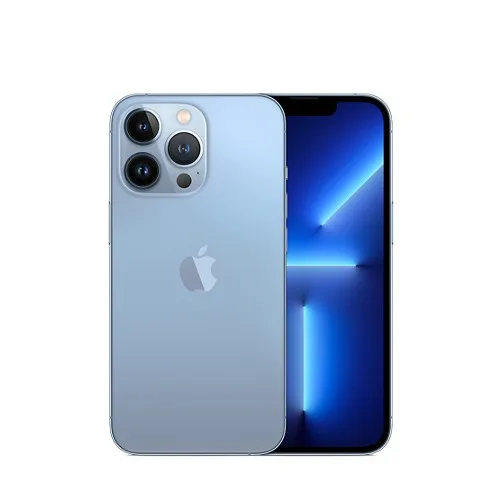Apple iPhone 13 Pro review: Incremental improvements make for a superb premium phone
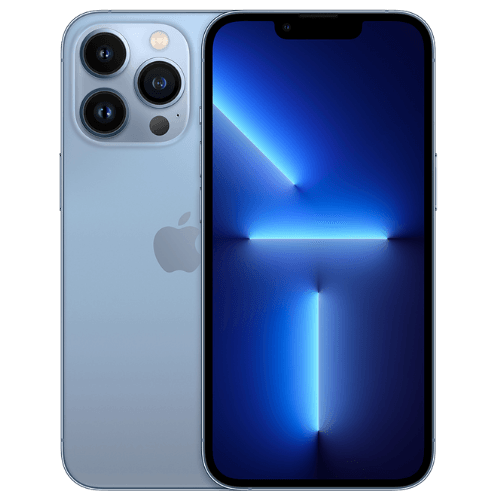
-
- Battery Score
4
- Camera Score
5
- Design Score
3.5
- Performance Score
5
- Battery Score
4
Summary
Quick verdict: You don't need to upgrade to the iPhone 13 Pro if you're using the iPhone 12 or 11, but if you do, you're going to get a seriously impressive handset.
- Powerful, easy-to-use cameras
- A15 Bionic is insanely fast
- Compact size without compromised cameras
- MagSafe is fun to use
- Expensive
- Some apps don't like the new FaceID notch at launch
- No supplied charger
- No expandable memory
- It's not a major redesign
Details
Pricing & Availability
| RRP | $0 |
| Launch date | 2021-09 |
The iPhone 13 Pro is Apple's smaller "Pro" branded phone for 2021. That mirrors what Apple did in 2020, but in that year, the smaller Pro phone really didn't do enough to justify its asking price, with the best camera goodies left solely with the iPhone 12 Pro Max model instead.
That's not what Apple's done in 2021, with both phones sharing the same cameras, the same processor and the same exceptional performance.
Combine that with a lower asking price and a more pocket-friendly design, and the iPhone 13 Pro jumps from being an afterthought to being the pick of the current iPhone crop.
Design: Welcome to the 120Hz party
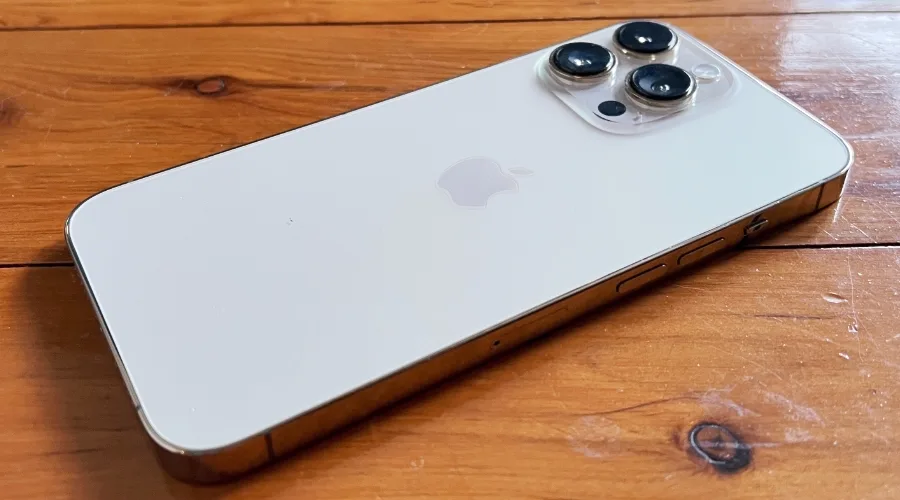
Image: Alex Kidman/Finder
Apple has historically tended to run on roughly 2-year cycles when it comes to major redesigns of the iPhone line-up. We saw some big changes for the iPhone 12 in 2020, but in 2021, at least at first glance, you could be forgiven for mistaking it for the iPhone 12 Pro. Is there a triple-lens array on the back? There sure is. A 6.1-inch display with a TouchID notch at the top? Indeed.
Apple has largely played it conservative with the physical design of the iPhone 13 Pro, but there are some differences you won't spot right away. The power, volume and mute switch locations have dropped down a couple of millimetres on the phone body, which means that you can't just recycle an old iPhone 12 Pro case onto the iPhone 13 Pro. It's also marginally fatter, although some cases could probably accommodate that kind of issue.
Where the big design change has happened, and specific only to the Pro models of the iPhone 13 family, is in the use of a high refresh rate screen. Having 120Hz or higher refresh rate screens are somewhat old hat in the Android world, but to date, Apple has stuck with 60Hhz capable displays in every iPhone. The iPhone 13 Pro (and bigger Pro Max) features what Apple calls "ProMotion", which is a fancy way of saying it has a 120Hz variable refresh rate screen.
That variability is important, but it's also limited in the way that you can access it. Many Android phones with 120Hz screens allow you to set that as the default, but the only toggle (hidden away in Accessibility>Motion>Limit Frame rate if you're curious) you've got with the iPhone 3 Pro allows you to fix it back to 60Hz. If you want up to 120Hz, you've got to let the iPhone 13 Pro decide when that's going to kick in.
120Hz is, as it's been on Android phones, very much a "nice to have" feature, whether you're just doomscrolling your social feeds or playing games with support for those kinds of refresh rates. It's also joined by a boost in screen brightness, again dynamically managed by the iPhone 13 Pro at up to 1,000 nits.
The end result is one of the nicest screens to look at indoors or outdoors I've tested to date. Apple tends to do very well in independent display analysis tests for a reason.
The Pro line of iPhone 13 models give you a smaller array of colour choices relative to the cheaper iPhone 13 line. You can pick from Silver, Gold (as tested), Graphite or the new Sierra Blue colour. It's a markedly lighter blue than last year's Pacific Blue if that's important to you.
iPhone 13 Pro camera: A seriously impressive snapper
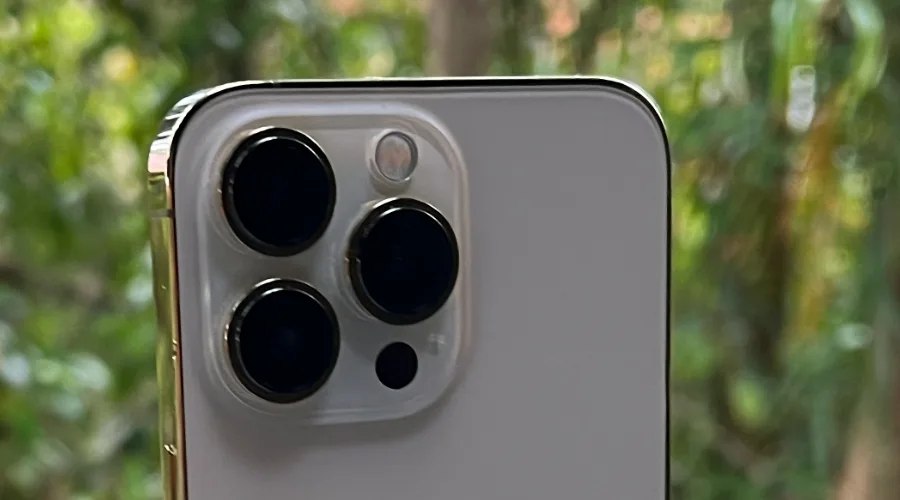
Image: Alex Kidman/Finder
As it has long done, Apple doesn't sell the iPhone 13 Pro on the specifications of its cameras. If you just looked at the raw numbers – a trio of 12MP lenses at the rear and a 12MP selfie camera at the front – you might think it underpowered.
You'd be wrong.
What Apple has done with the iPhone 13 Pro is utilise its top to bottom control of not only the hardware design but also the software to deliver a highly controlled, highly precise photographic instrument. While the numbers might not sound that impressive, the results that you can rather easily get from it absolutely are, even if they're in areas where Apple hasn't concentrated in the past.
For stills, the new kid on the Apple block is macro shooting. I've honestly lost track of the number of cheap Android phones I've tested in the last 12 months with dedicated but awful macro lenses on board, so it's certainly not a new field.
However, Apple's automatic use of the ultra-wide lens for macro capture, combined with the image-signal processing capabilities of the A15 Bionic processor, gives it a lot of power when it comes to taking close-up shots of the world around you. The results can be truly stunning, although you don't currently have the option to deliberately fire into macro mode at will.
As such, I've lost a few insect shots because I was waiting for the lens to realise how close I was to my subject, only to have it fly away. Hopefully, a future iOS upgrade will make direct and deliberate macro shooting possible.

Image: Alex Kidman/Finder

Image: Alex Kidman/Finder
For video, there's the new Cinematic mode, which pulls focus to subjects as it detects them automatically, while also allowing you to post-edit on the phone if it does make an unwanted focus shift. It's quite smart stuff for small-scale video shooting, although in classic Apple style, it's an all-or-nothing proposition. If you want it on, you pick Cinematic mode and it does it all for you while shooting or you take regular video and do without it entirely.
Just about any mid-range phone you could name can take good shots in everyday lighting situations. Premium phones should be able to capture good images in harsher situations, and especially low-light ones.
To put that to the test, I took the iPhone 13 Pro (and its siblings, the iPhone 13 and iPhone 13 Mini) out for some low-light comparative shooting. Keeping in mind the phones that Australians predominantly buy, I also included the Samsung Galaxy S21 Ultra 5G, currently my pick of the best low-light phones, alongside the fancy Galaxy Z Fold 3.
There's some inevitable compression for the web here to bear in mind.
Here's how the phones compared taking 2 shots. The first shot is of an open field with stars just about visible to the naked eye. This is in Sydney, where the light pollution makes most astrophotography futile. The second shot is of a local sports ground clubhouse to take in multiple light sources and potential overexposures against a dark background.
Not surprisingly, the iPhone 13 and iPhone 13 Mini shoot near identically – they are, after all, using the same camera modules:
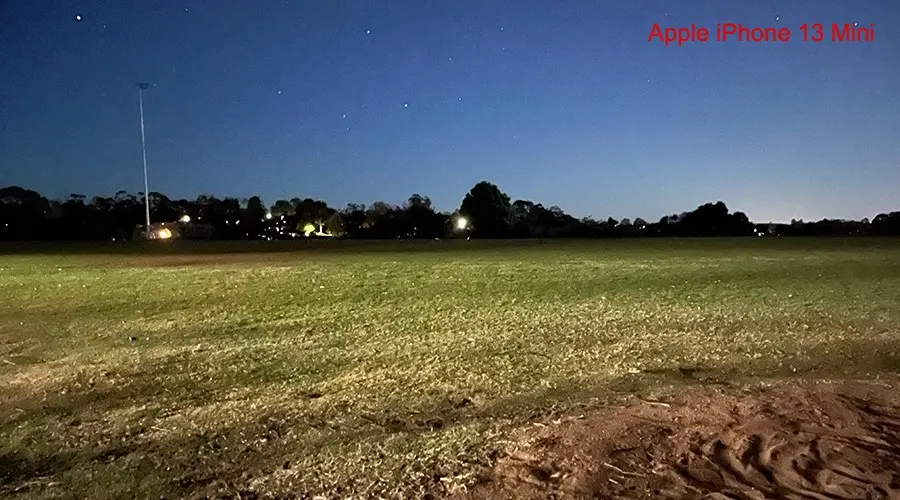
Image: Alex Kidman/Finder
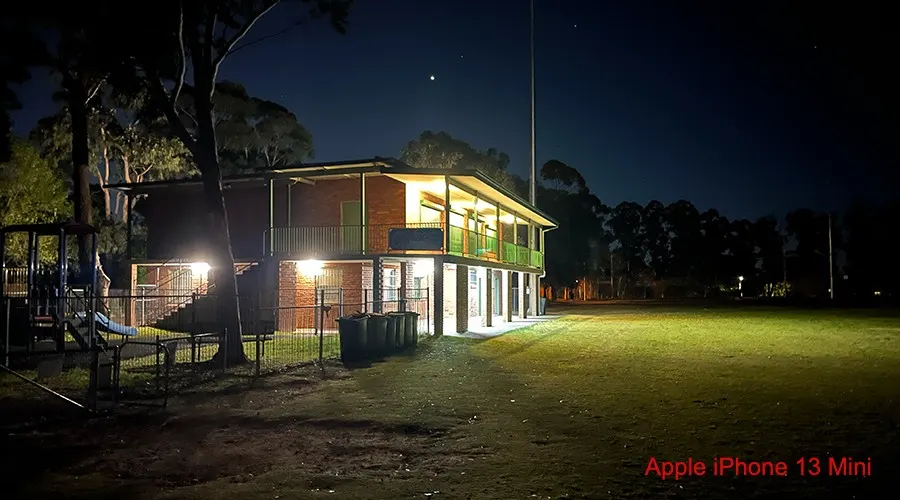
Image: Alex Kidman/Finder
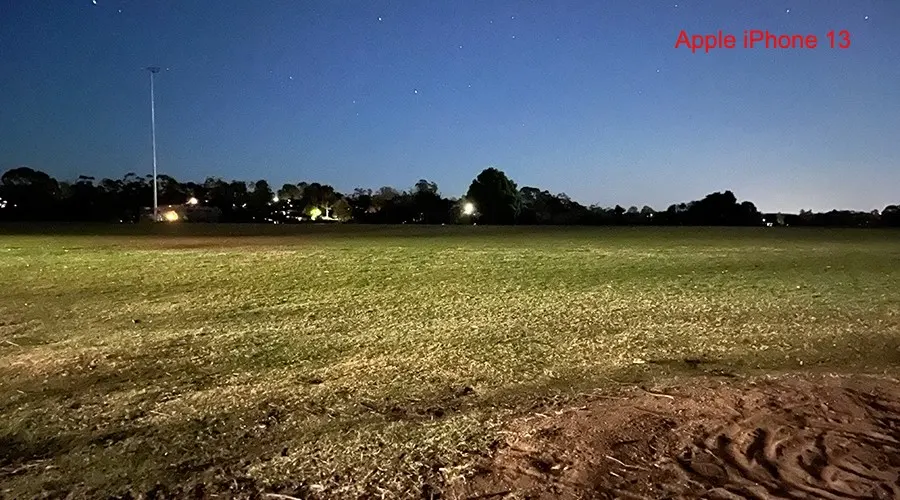
Image: Alex Kidman/Finder
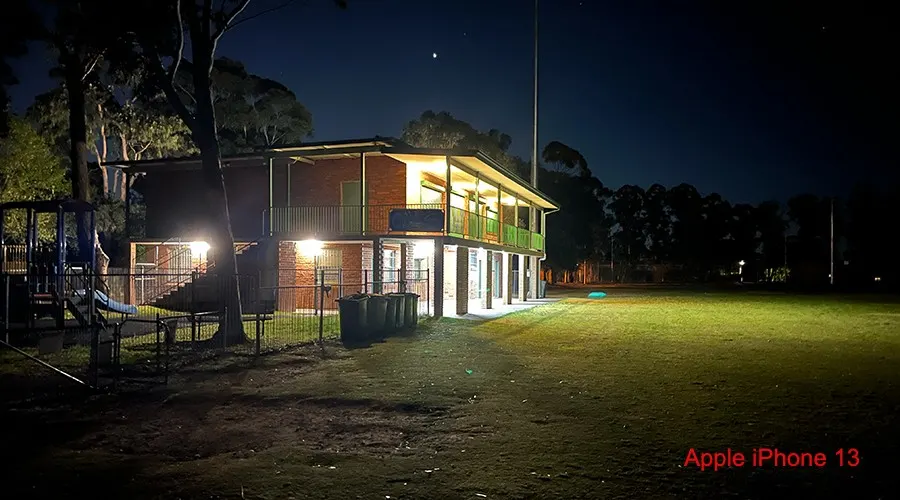
Image: Alex Kidman/Finder
The Galaxy Z Fold 3 doesn't quite have the same camera chops as the S21 Ultra 5G, but it runs well here too. It's a sign of how well premium phones can generally handle low-light conditions:
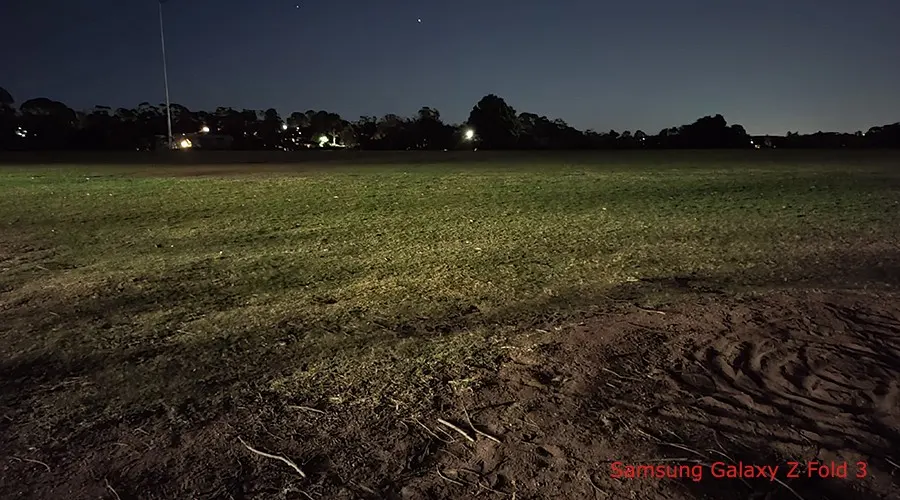
Image: Alex Kidman/Finder
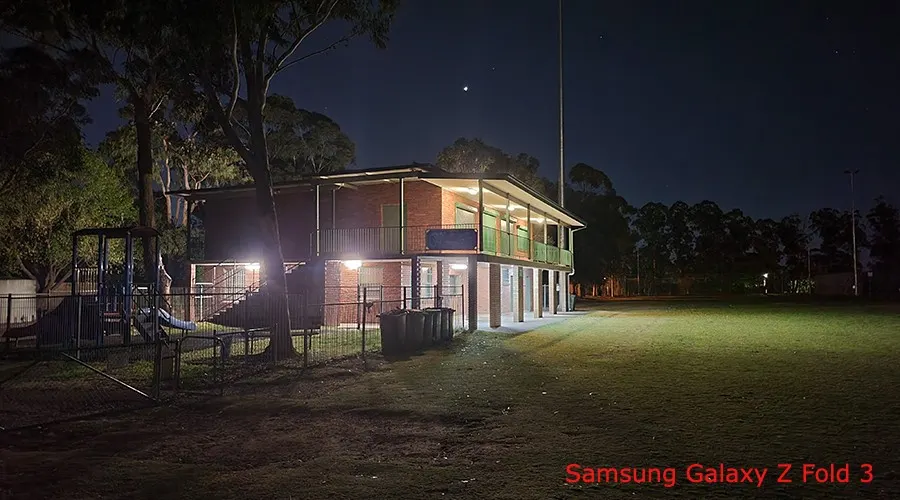
Image: Alex Kidman/Finder
Here's how the Galaxy S21 Ultra 5G compares. One mea culpa here. I had to re-take this shot, as I'd accidentally had the S21 Ultra 5G's camera set in 16:9 mode for my first take, which is why the framing is a little different for the first shot:
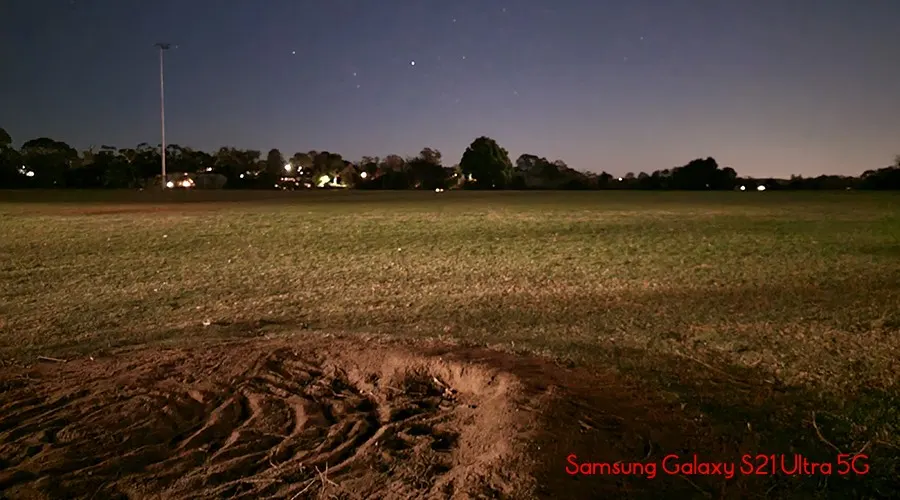
Image: Alex Kidman/Finder
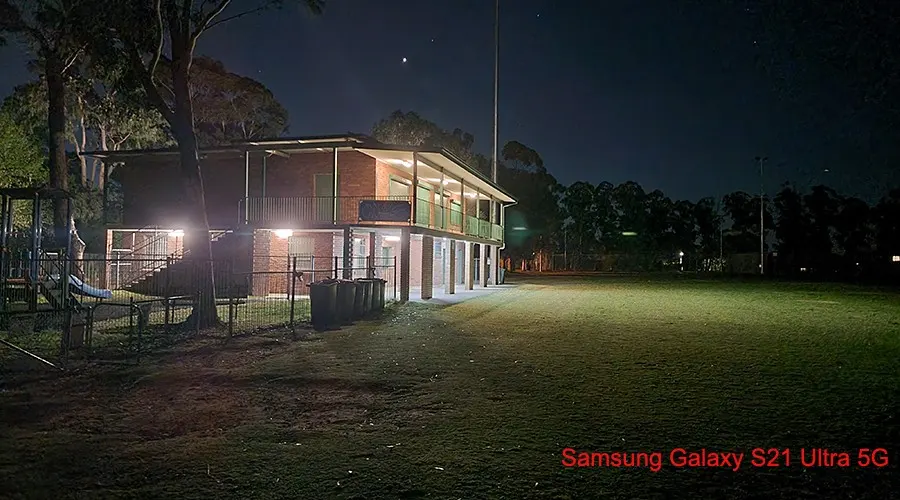
Image: Alex Kidman/Finder
So how does the iPhone 13 Pro compare?
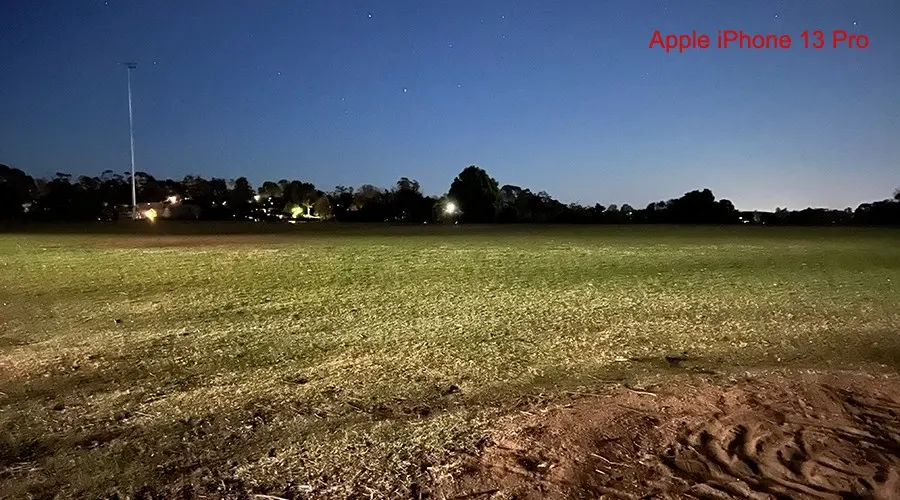
Image: Alex Kidman/Finder
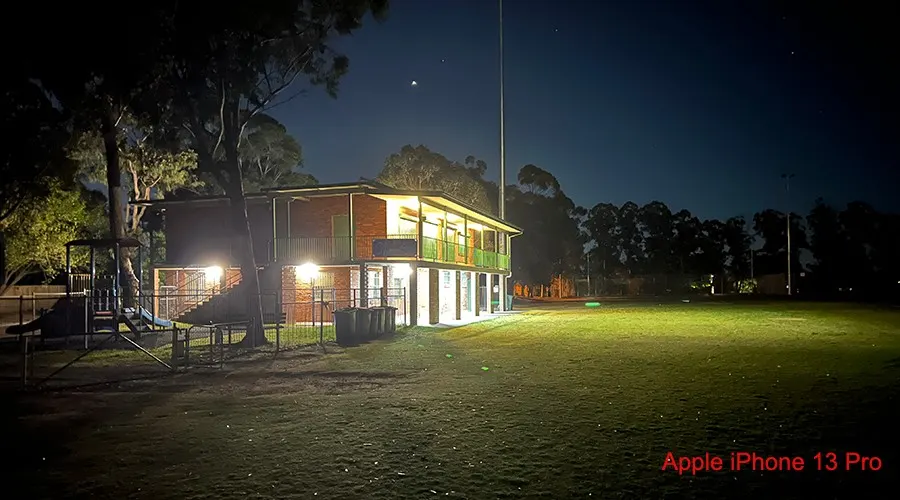
Image: Alex Kidman/Finder
I'd give the edge to the S21 Ultra 5G for the first shot, simply because it grabs the star field with quite a degree more brilliance, although your results would vary a lot if you threw all the phones onto a tripod.
That's where Apple's night shooting would take over with a much longer exposure. For the second shot, however, Apple's take is a much more aesthetically pleasing one, with deeper colour tones despite the light sources blowing out both cameras.
What you don't see in those pictures is the speed of focus, and this is where the iPhone 13 Pro's LiDAR sensor makes a big difference. I could snap to focus even in low light very rapidly in all cases, which meant I could more quickly take actual shots.
You're also not limited to just the primary wide lens, either. Here's the clubhouse taken with the wide lens from the same standing position:
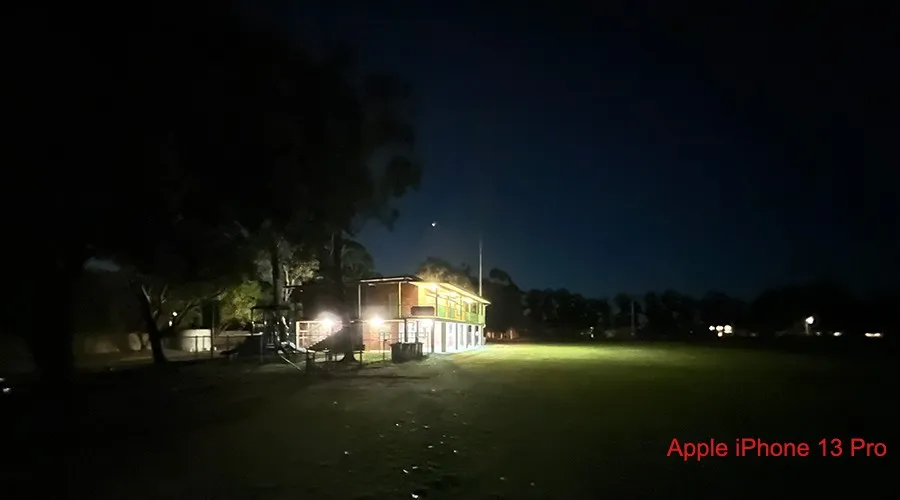
Image: Alex Kidman/Finder
It did struggle a little with blowing out the front of the clubhouse and light there, but if that's what you really wanted, the 3x optical zoom lens is ready to work for you:
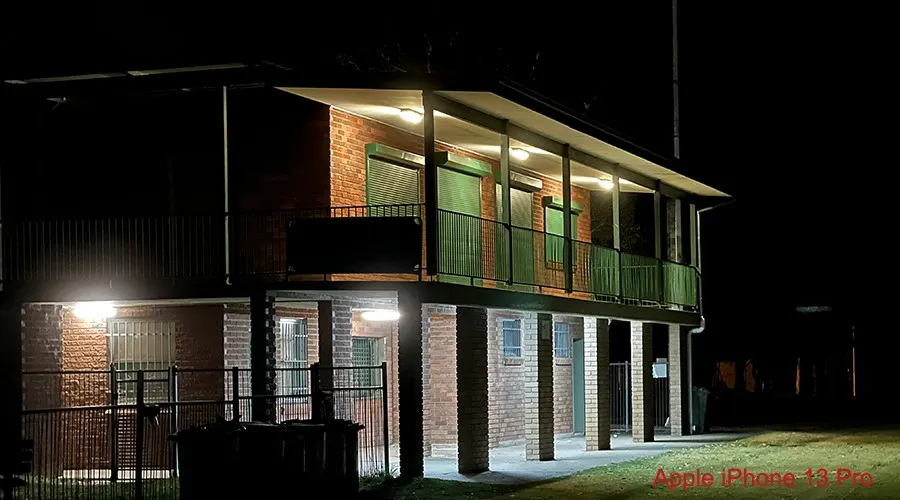
Image: Alex Kidman/Finder
The iPhone 13 Pro features ultra-wide, wide and telephoto lenses, plus the ability to push that telephoto out to 15x via digital zoom. For the most part, it handles this quite well. While 15x digital isn't superb in a straight up zooming sense relative to the 30-50x zoom we've seen on other premium handsets, keeping it moderate means that you can still end up with good results.
As an example, here's a tree nearby my home on the ultra-wide lens:
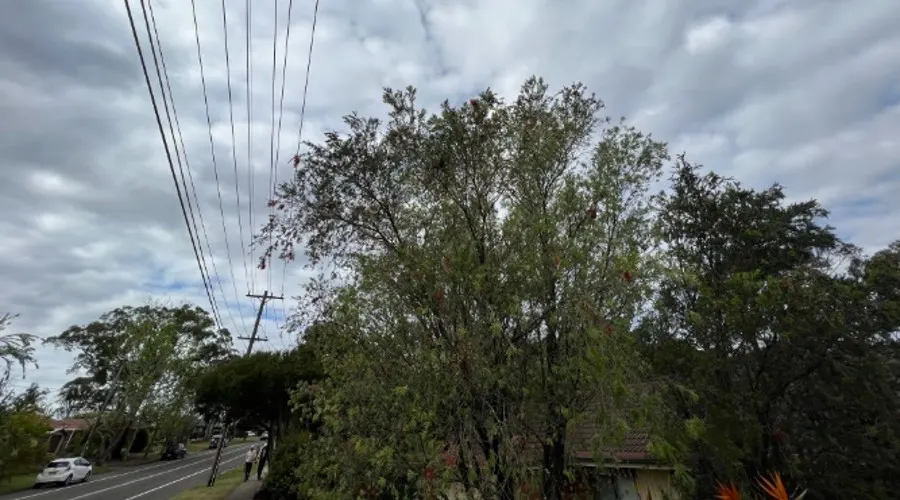
Image: Alex Kidman/Finder
Then the same on the wide lens:

Image: Alex Kidman/Finder
Then on the 3x optical zoom lens alone, keeping everything sharp:

Image: Alex Kidman/Finder
Pushing it to 15x does show the cracks, although the iPhone 13 Pro does a decent job of stabilisation and capturing a moving subject:
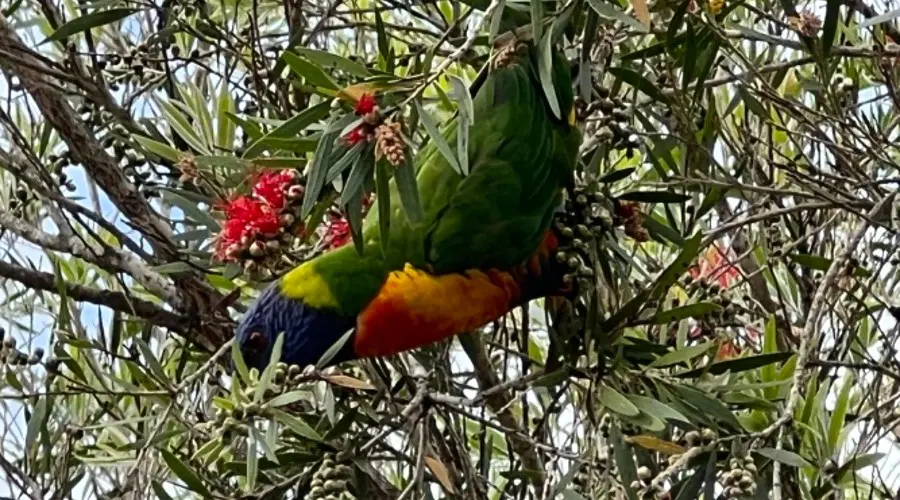
Image: Alex Kidman/Finder
What you end up with is a very familiar story for anyone who's used an iPhone camera in the past decade. Apple's primary approach is to offer a strongly guided and controlled approach to photography, with an eye towards making Pro-looking shots easy for novices. Meanwhile, if you are in the actual Pro space, you can shoot straight to RAW, at which point features such as the new photographic styles presets aren't so useful, but the power of the iPhone 13 Pro to shoot great photos comes in very handy.
Want even more iPhone 13 camera comparisons? Check out our iPhone 13 Pro Max vs Pro vs 13 vs 13 Mini camera shootout.
Apple iPhone 13 Pro sample photos

Image: Alex Kidman/Finder

Image: Alex Kidman/Finder
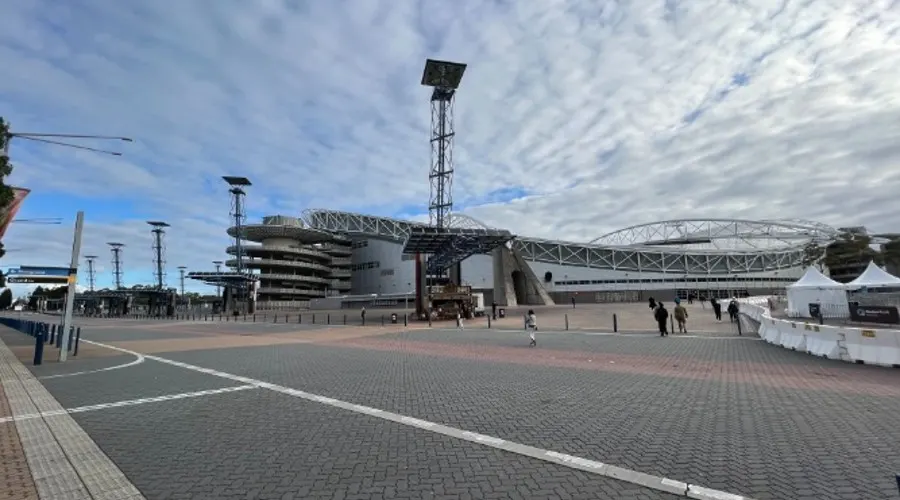
Image: Alex Kidman/Finder
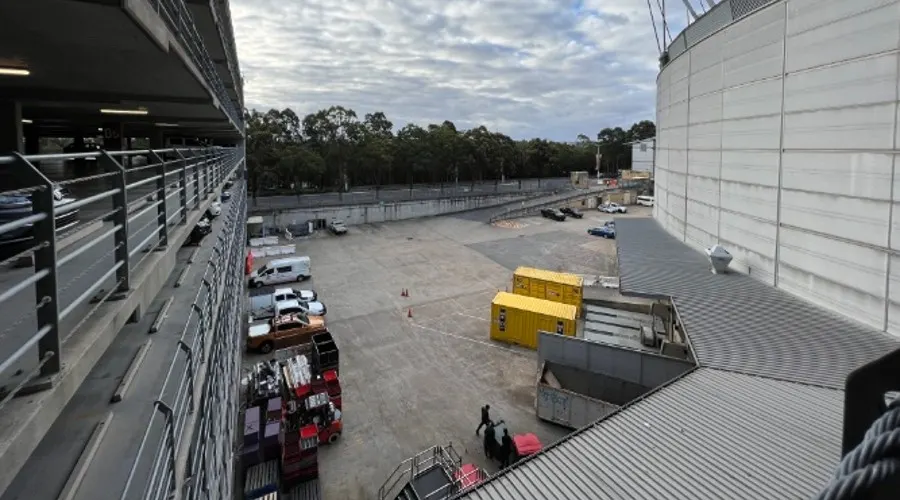
Image: Alex Kidman/Finder

Image: Alex Kidman/Finder

Image: Alex Kidman/Finder

Image: Alex Kidman/Finder
Performance: A15 Bionic dominates
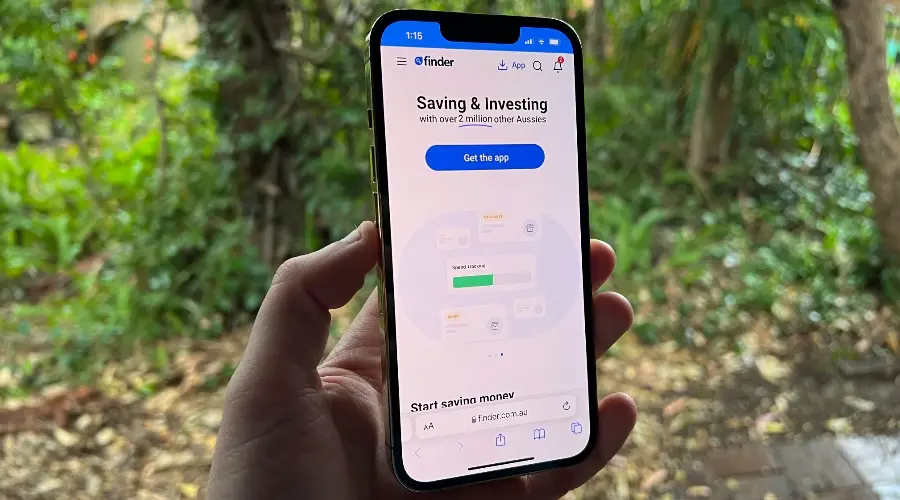
Image: Alex Kidman/Finder
It's almost a cliché now to say that the iPhone's performance is better than its Android counterparts. We're still waiting to see an Android system that can best the performance of 2020's A14 Bionic, so of course Apple has upped the ante with the A15 Bionic within the iPhone 13 Pro.
There's a big important performance caveat here around the Pro models of the iPhone 13. All iPhone 13 devices have what Apple calls the A15 Bionic as their core silicon, but not all A15 Bionics are the same. The regular iPhone 13 and iPhone 13 Mini feature an A15 Bionic with a 6 core CPU and 4 core GPU, but on the Pro models, there's an extra GPU core for added performance. Apple's position on this is that it's largely to handle functions like the ProMotion display and added camera lenses, but I was genuinely curious to see at this early stage how the phones varied in standard benchmarks.
That's especially important because it's not as though most iPhone buyers are likely to be moving from last year's iPhones anyway. The smart buy here is to upgrade to an iPhone 13 Pro if you're coming from an older generation iPhone because that's where you'd see the bigger performance upgrades anyway. So how does the iPhone 13 Pro compare? Here's the comparative picture using Geekbench 5's CPU test:
And here's how those phones compare across 3DMark's GPU tests. We don't have full Slingshot and Wildlife scores for all phones in our testing, and every single iPhone 13 model maxes out the Slingshot Extreme test in any case:
The extra GPU power in the Pro A15 Bionic isn't really tapped by applications just yet, although it's early days in terms of how app developers actually target that power. The challenge here is that from a user perspective, modern premium handsets have been more than powerful enough for most applications for quite some time now.
It's definitely cool to have the supercar of smartphone performance in your pocket for bragging rights, but if you're more mindful of your money, it is worth keeping in mind that the regular, lower-cost iPhone 13 is still a staggeringly powerful device.
The iPhone 13 Pro is also 5G capable, but once again, Australians aren't getting what I feel they should be in pure 5G terms. I'd strongly argue that most phone buyers these days aren't opting for year in, year out phone changes and that means that buying with a little future proofing in mind is wise.
Apple produces a 5G model of the iPhone 13 Pro that includes both sub-6Ghz and mmWave capabilities, but it only sells those models in the USA. Australia sits in a "rest of the world" 5G bucket for devices, which means we're not getting quite as capable a 5G handset as we otherwise might expect.
What does that mean in real-world testing? Travel limitations around the pandemic and the one-week testing time for the iPhone 13 Pro have limited my ability to run lots of 5G tests. Using Telstra's existing sub-6Ghz network in Sydney, I could hit peaks of around 300-400Mbps, which is dead in line with what I see out of most 5G handsets. If Apple really wants to pitch the iPhone 13 Pro as being capable of "Superfast" 5G, it'd be nice if it included the hardware to make that actually happen.
iPhone 13 Pro battery: Good, not great, thanks to the small battery
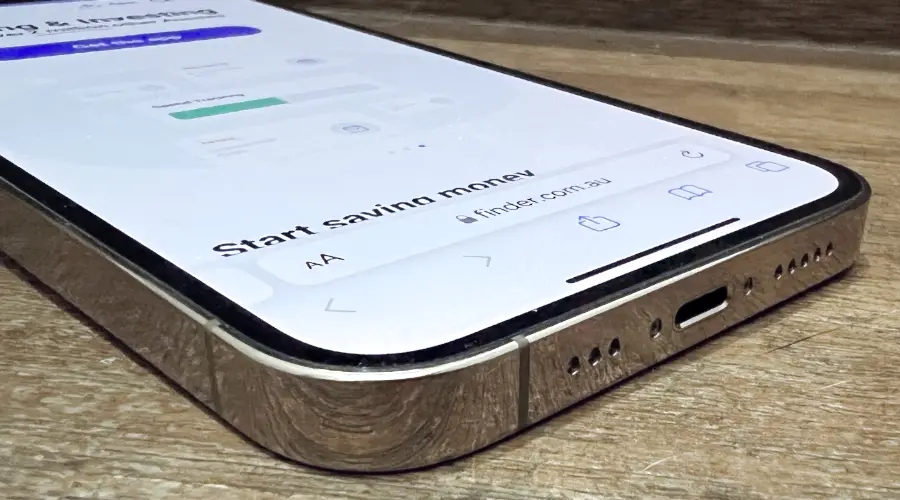
Image: Alex Kidman/Finder
The longest running joke in smartphone circles when it comes to power is at the expense of iPhone owners, although in recent years, we've seen some good results out of Apple's largest Pro Max devices.
That's left the smaller Pro in a difficult position because it's typically shared the battery capacity and size of the smaller regular unit in its given year, but much of the heavier feature set of a Pro handset. Apple never actually talks about battery capacities, but it was notable that it announced the regular iPhone 13 should last up to 2.5 hours more than the iPhone 12 while stating that the iPhone 13 Pro would only enjoy a 1.5-hour boost.
Prior to launch, that was presumably going to come down to the requirements of the cameras and especially that ProMotion display. However, post launch, the iPhone 13 Pro has been disassembled by third parties such as iFixit. From those teardowns, it becomes a little clearer why Apple's not stating a higher battery expectation for the iPhone 13 Pro. It's because while the regular iPhone 13 features a 3,227mAh battery pack, the iPhone 13 Pro only gets 3,095mAh to sip from.
Battery life usage is subjective depending on your use-case scenarios. To give some comparative context, I ran the iPhone 13 Pro through our standard battery life test, streaming a 1080p YouTube video at maximum brightness and moderate volume for an hour from a fully charged battery. What we typically look for here is at least 90% battery life because that's where phones often signal that they'll struggle to get through a full day's regular usage. Here's how the iPhone 13 Pro compares:
The iPhone 13 Pro matched the iPhone 13 while falling short of where the iPhone 13 Pro Max managed in the same test. That's especially surprising because the ProMotion display isn't only capable of higher refresh rates. It's also notably brighter, up to 1,000 nits compared to a maximum of 800 nits on the regular iPhone 13 models. All of that saps power, but then video is a rather solved problem for battery life.
Dialling that display screen's brightness down markedly and using it day to day for a week showed better battery endurance than those figures would suggest. I've regularly been able to get into a second day without needing to recharge and often hit evenings with 30-40% battery life remaining, which is admirable.
Apple's sticking to its no-charger position as it did with the iPhone 12 family, and it's still also sticking to Lightning as the connector of choice for the single included charging cable in the box. You'll need a USB-C ended plug to charge that way at up to 20W. If wireless is your preference, the iPhone 13 Pro is MagSafe compatible for charging at up to 15W or a rather more sedate 7.5W via a regular Qi wireless charger.
Should you buy the Apple iPhone 13 Pro?
- Buy it if you want the best iPhone Apple's releasing in 2021.
- Don't buy it if you're upgrading from the iPhone 12.
If you're looking to upgrade from an iPhone that's at least 2 years old, and you want pro features and future proofing, the Apple iPhone 13 Pro is an easy recommendation. It's arguably more powerful than you really need, but in the direct Apple iPhone space right now that cascades down to the iPhone SE 2020, which is a considerably less capable device with far worse battery life.
The classic iPhone issues remain. You can't expand the storage, and you very much have to do things Apple's way or not at all. However, the bump up from the regular iPhone 13 does justify its asking price. It's also more comfortable to hold and use for most users than the big lad that is the iPhone 13 Pro Max, putting the iPhone 13 Pro in a very sweet (if somewhat pricey) spot all by itself.
If you're interested in more iPhone 13 reviews, we have also tested the iPhone 13 Mini, iPhone 13 Pro Max and regular iPhone 13.
iPhone 13 Pro pricing and availability
The Apple iPhone 13 Pro is available to buy outright or on contract in Australia now with pricing starting at $1,849. Compare iPhone 13 plans below.
Specifications
Display
Camera
Physical Dimensions
Connectivity
Power, storage and battery
Device features
How we tested
The iPhone 13 Pro was tested intensively over a week's testing time, putting camera, battery and app performance to the test in benchmarks and real-world scenarios. Movement limitations due to the pandemic did limit the level of camera and 5G testing that was capable. Ideally, we'd prefer to test real-world battery usage over more than a week's period, and we plan to revisit this review in a few weeks to update any observations on more general battery life.
Images: Alex Kidman
More Finder reviews
- Samsung Galaxy S25 Ultra review – Still an Android powerhouse
- iPhone 16 and 16 Plus review – Closing the gap
- iPhone 16 Pro and 16 Pro Max review – Shockingly good battery life
- Google Pixel 9 Pro XL review – Fantastic phone, even better cameras
- Samsung Galaxy Z Flip 6 review: Great phone held back by price
Alex Finder
Senior editor
You are about to post a question on finder.com.au:
- Do not enter personal information (eg. surname, phone number, bank details) as your question will be made public
- finder.com.au is a financial comparison and information service, not a bank or product provider
- We cannot provide you with personal advice or recommendations
- Your answer might already be waiting – check previous questions below to see if yours has already been asked
Finder only provides general advice and factual information, so consider your own circumstances, or seek advice before you decide to act on our content. By submitting a question, you're accepting our Terms Of Service and Finder Group Privacy & Cookies Policy.
This site is protected by reCAPTCHA and the Privacy Policy and Terms of Service apply.

